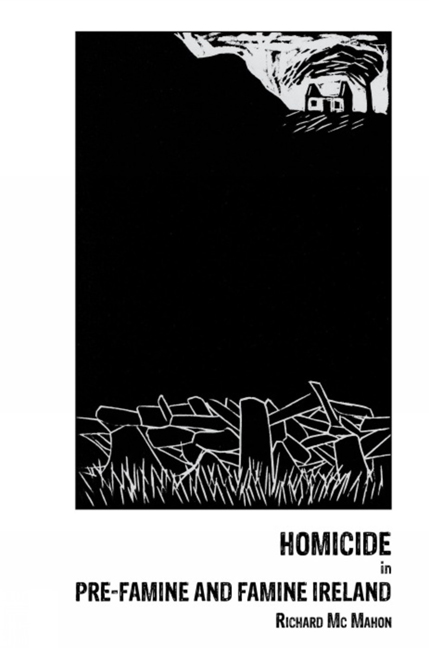Book contents
- Frontmatter
- Dedication
- Contents
- List of tables and figures
- Preface
- ‘A violent society’?
- 1 Homicide rates in Ireland, 1801–1850
- 2 ‘Do you want to pick a fight out of me?’: Homicide and personal relations
- 3 ‘Sending them to heaven’: Homicide and the family
- 4 ‘The tranquillity of a barrel of gun powder’: Homicide and land
- 5 ‘The madness of party’: Homicide and sectarianism
- Conclusion
- Appendix one: Methods and sources
- Appendix two: Homicide and motive
- Bibliography
- Index
3 - ‘Sending them to heaven’: Homicide and the family
- Frontmatter
- Dedication
- Contents
- List of tables and figures
- Preface
- ‘A violent society’?
- 1 Homicide rates in Ireland, 1801–1850
- 2 ‘Do you want to pick a fight out of me?’: Homicide and personal relations
- 3 ‘Sending them to heaven’: Homicide and the family
- 4 ‘The tranquillity of a barrel of gun powder’: Homicide and land
- 5 ‘The madness of party’: Homicide and sectarianism
- Conclusion
- Appendix one: Methods and sources
- Appendix two: Homicide and motive
- Bibliography
- Index
Summary
The role of the family in pre-Famine and Famine Ireland, let alone the role of violence within it, has received little attention within the historiography. There are, however, exceptions. Fitzpatrick, in an article on the role of the family in rural unrest, suggests that ‘intra-family conflict was unusually prevalent in nineteenth-century Ireland, with its extensive kinship networks, its scarcity of resources and its lack of clear criteria for disposing of property.’ Fitzpatrick's main concern, however, is with the wider issue of ‘rural unrest’ and his study of intra-family conflict focuses largely on economic disputes among families over the control of land and other resources. Such cases are undoubtedly significant, and they will be discussed in greater detail in the next chapter, but they by no means constituted the sum total of cases of intra-family violence in this period. Rather, violence within the family often stemmed from more personal motives. The only sustained analysis of these personal family disputes in pre-Famine and Famine Ireland is provided by McCabe.
As one might expect in a study that sees the protection of family honour and kin solidarity as a key feature of social life, McCabe stresses the relative infrequency of intra-family homicide. Spousal homicides, although the most common form of family homicide, were, he points out, relatively few in number. He suggests that this may have been due to strict definitions of gender roles in Irish society, where ‘female inferiority’ was broadly accepted. He also stresses the rarity of cases involving other family members claiming that the ‘moral solidarity of the family ensured that conflict between siblings and between parents and children was kept below extreme levels’. While agreeing with McCabe that the use of violence within the family, although often severe, was clearly controlled and limited, a somewhat different interpretation will be offered. The relative rarity of family homicide cases was not necessarily rooted in the acceptance of notions of ‘female inferiority’ or the ‘moral solidarity’ inherent in or peculiar to ‘peasant societies’, but rather reflects a continuity of behaviour within the family which persists to the present day. Such continuities are evident not only in the rates of family homicide but also in the contexts in which such cases emerge. This chapter also explores whether insights derived from evolutionary theory can shed light on the continuities in violent behaviour both inside and outside the family.
- Type
- Chapter
- Information
- Homicide in pre-Famine and Famine Ireland , pp. 59 - 88Publisher: Liverpool University PressPrint publication year: 2013



